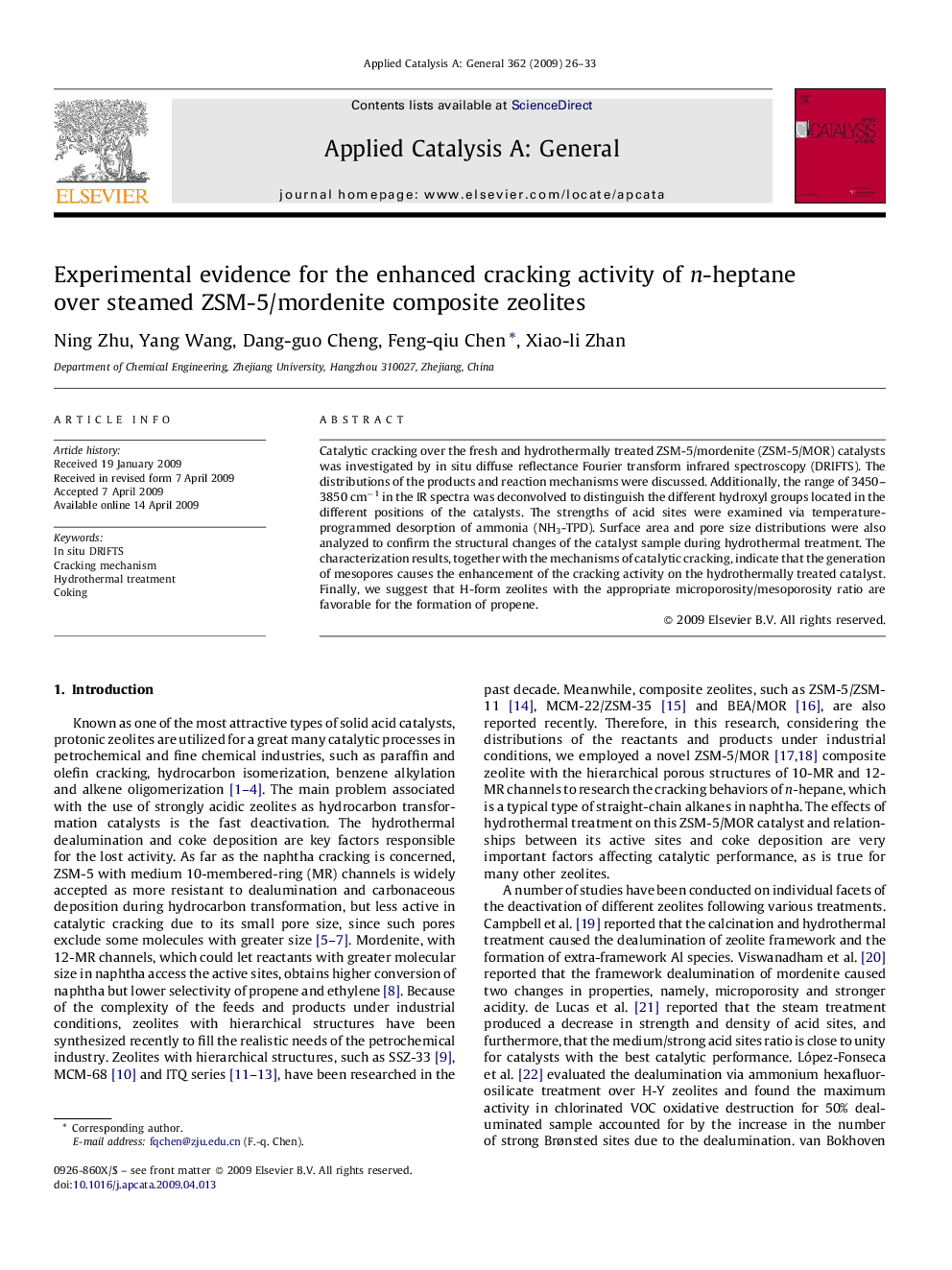| Article ID | Journal | Published Year | Pages | File Type |
|---|---|---|---|---|
| 42683 | Applied Catalysis A: General | 2009 | 8 Pages |
Catalytic cracking over the fresh and hydrothermally treated ZSM-5/mordenite (ZSM-5/MOR) catalysts was investigated by in situ diffuse reflectance Fourier transform infrared spectroscopy (DRIFTS). The distributions of the products and reaction mechanisms were discussed. Additionally, the range of 3450–3850 cm−1 in the IR spectra was deconvolved to distinguish the different hydroxyl groups located in the different positions of the catalysts. The strengths of acid sites were examined via temperature-programmed desorption of ammonia (NH3-TPD). Surface area and pore size distributions were also analyzed to confirm the structural changes of the catalyst sample during hydrothermal treatment. The characterization results, together with the mechanisms of catalytic cracking, indicate that the generation of mesopores causes the enhancement of the cracking activity on the hydrothermally treated catalyst. Finally, we suggest that H-form zeolites with the appropriate microporosity/mesoporosity ratio are favorable for the formation of propene.
Graphical abstractThe mechanisms of catalytic cracking over the fresh and steamed ZSM-5/MOR were investigated by in situ DRIFTS. The surface area and pore size analyses confirmed increased mesopores and decreased micropores after hydrothermal treatment. The increased mesopores enhanced bimolecular pathways and the decreased micropores constrained monomolecular pathways. Therefore, the initial activity of the steamed sample was boosted and the i-C4/C3 ratio was increased.Figure optionsDownload full-size imageDownload as PowerPoint slide
